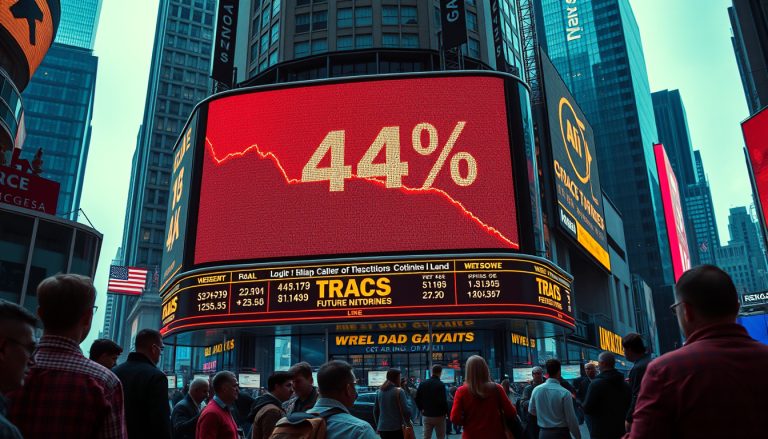In a significant move for pharmaceutical innovation, Eli Lilly has committed to a $250 million partnership with Purdue University, aimed at strengthening drug discovery and manufacturing.
This collaboration, extended through 2032, is poised to become one of the most extensive industry-academic agreements in the U.S., marking a substantial investment in scientific research and development.
Concurrently, the pharmaceutical landscape faces regulatory hurdles as the European Medicines Agency (EMA) halts the use of Valneva’s chikungunya vaccine for seniors due to safety concerns, while gene editing advancements from CRISPR Therapeutics show promise in clinical trials.
Furthermore, Vivo Capital’s robust fundraising efforts and strategic market evaluations by Charles River Laboratories reflect ongoing shifts within the biotech sector, underscoring the dynamic nature of the industry.

Key Takeaways
- Eli Lilly’s collaboration with Purdue University represents a significant investment in drug discovery, totaling $250 million over eight years.
- The European Medicines Agency has halted the use of Valneva’s chikungunya vaccine in older adults due to safety concerns while recommending it for younger populations.
- CRISPR Therapeutics’ early-stage trial shows promising results in lowering blood fat levels, indicating potential advancements in gene editing treatments.
Eli Lilly and Purdue University: Advancements in Drug Discovery
Eli Lilly’s recent announcement regarding the extension of its collaboration with Purdue University marks a significant milestone in the realm of drug discovery.
This partnership, which involves a commitment of up to $250 million over the next eight years, is poised to cement its position as one of the largest industry-academic agreements in the United States.
By extending their collaboration until 2032, Eli Lilly aims to leverage Purdue’s resources, including the integration of Lilly researchers directly on campus.
This move not only emphasizes the importance of academia-industry partnerships in fostering innovation but also aims to enhance both drug discovery and manufacturing capabilities in Indiana.
The collaboration is expected to facilitate projects that bridge theoretical research and practical, clinical applications, thereby streamlining the pathway from laboratory discoveries to marketable therapeutics.
In other industry news, the European Medicines Agency (EMA) has placed a temporary suspension on the use of Valneva’s chikungunya vaccine, Ixchiq, for individuals aged 65 and older due to safety concerns.
Reports surfaced of severe adverse effects, including two fatalities among older adults with pre-existing conditions, prompting the EMA to act cautiously while still recommending the vaccine for younger adults aged 12 to
65.
This situation underscores the constant balancing act faced by regulators and companies in ensuring patient safety while advancing public health initiatives.
Moreover, CRISPR Therapeutics has shared encouraging data from an early-stage clinical trial of its experimental gene editing treatment.
The results indicate that the treatment can significantly lower blood fat levels, achieving reductions in triglycerides and LDL cholesterol by as much as 82% and 81%, respectively.
These findings could pave the way for innovative therapeutic strategies in cardiovascular disease management, an area of significant health concern worldwide.
Vivo Capital has successfully closed its third evergreen fund, raising over $740 million, which will focus on investing in small and mid-cap drug companies.
This capital boost reflects a growing interest among investors in the biotech sector, especially in companies that may not yet have reached critical mass but hold innovative potential.
On a related note, Charles River Laboratories has announced a strategic review aimed at exploring options to enhance shareholder value amid evolving regulatory pressures affecting their business landscape.
Both developments signify a climate of active investment and strategic maneuvering within the biotech sector, crucial for sustained growth and innovation.
Regulatory Challenges and Innovations in the Pharma Sector
The partnerships and regulatory actions currently shaping the pharmaceutical landscape highlight the dual challenges and opportunities faced by companies operating in this sector.
Eli Lilly’s collaboration with Purdue University, while aiming to augment drug discovery capabilities, serves as a reminder of the complexities involved in bringing innovative solutions to market.
The commitment of substantial funding underscores a proactive approach to fostering academic and industrial synergies, which can often lead to transformative breakthroughs in therapeutics.
Conversely, the EMA’s precautionary measure regarding Valneva’s chikungunya vaccine spotlights the increasing scrutiny that new therapies face, stressing the importance of robust safety assessments in the wake of adverse event reports.
This juxtaposition between innovation push and regulatory caution serves as a crucial narrative for biotech executives, who must navigate these dynamics to align their strategies with compliance and patient safety ethos.
Furthermore, the encouraging results shared by CRISPR Therapeutics not only illuminate the potential of gene editing technology but also set a benchmark for performance that industry peers may look to replicate or innovate upon.
Such advancements could catalyze a more competitive environment, driving demand for effective investment strategies, like those demonstrated by Vivo Capital’s latest fund, as well as the critical evaluations undertaken by entities such as Charles River Laboratories.















